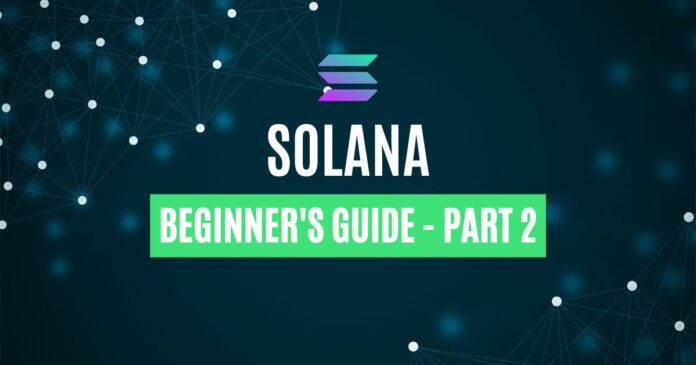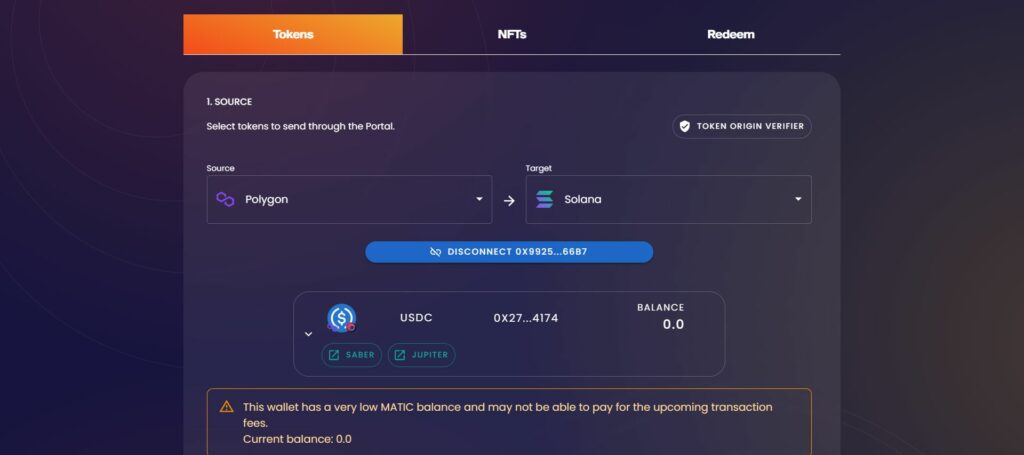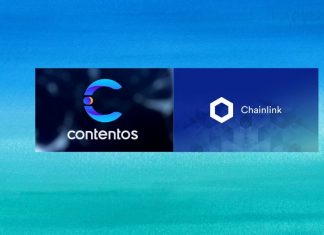Solana is one of the original blockchains that pundits said would kill Ethereum. While the death of Ethereum turned out to be premature, Solana continues to attract interest.
This is the second part in our two-article beginners guide for Solana. In Part 1, we answered four basic questions about the blockchain. Now let’s dive in with four more questions.
1/ A new report by @ElectricCapital shows that Solana is the fastest growing developer ecosystem, surpassing 2,000 total developers in 2022. It's second in raw numbers only to Ethereum.
Let's dig into the numbers.https://t.co/HQvPbQzQD2 pic.twitter.com/xV6pnoT7db
— Solana (@solana) January 17, 2023
How to Bridge to Solana?
If you want to send assets from Solana to other blockchains, you need to bridge it. We have a look at how you can bridge via the Wormhole Portal Bridge. The Wormhole bridge currently connects 21 chains. We will bridge from Polygon to Solana. So, you will need a Polygon-compatible wallet and a SOL wallet.
For Polygon-compatible wallets, you can use MetaMask, Trust Wallet, or Rabby Wallet. For SOL assets, you can use Phantom, Solflare, or Sollet. You need to connect wallets from both chains. For example, your MetaMask and your Phantom.
Wormhole will wrap the tokens or the NFTs. Unlike plenty of other bridges, there’s no need for double wrapping. Below is a picture of the Portal bridge showing Polygon as the source chain and Solana as the target chain. However, you can change the source chain to 20 other options.
Source: Portal Bridge
How to Buy or Sell SOL
The SOL coin is available on all major crypto exchanges. CoinGecko shows over 200 options. Some exchanges offer various SOL pairs. You can visit, for example:
- Binance
- Binance US
- OKX
- KuCoin
- Gate.io
- MEXC Global
Furthermore, plenty of smaller, local exchanges also offer Solana. No wonder, since it is a top 10 crypto by market cap. So, when you want to buy or sell SOL, you will need an account on one of these exchanges. Since this will most likely be a centralized exchange, expect a KYC procedure. This is a “Know Your Customer” procedure and is required by law. This can sometimes take up a few days.
When buying, you need to transfer fiat to the exchange and buy a stablecoin, like USDT or USDC. Occasionally you can even buy crypto direct with fiat. However, bank transfers or credit card payments are the most used options. Once you have exchanged your fiat for crypto, you can buy SOL.
Selling SOL follows a similar procedure. You sell your SOL coins for fiat and withdraw it. Some bigger exchanges also offer a P2P (peer-to-peer) option. Below is a picture of the Solana/USDT chart on Binance on February 2, 2023.
Source: Binance
SOL Use Cases
The Solana blockchain has many use cases. They range, for example, from:
- Being faster than Ethereum. This is a major reason why Solana attracts developers and users.
- NFTs – After Ethereum, it has the second biggest NFT space.
- dApps – Solana has DeFi, NFT, trading, and many other dApps on its platform.
- Trading and passive income.
However, we want to have a look at the use cases for the SOL coin. It is the native token for Solana, and it has two major use cases.
- Transaction fees. These are all paid in SOL. So, if you would like to trade, send, or mint NFTs on the Solana blockchain, you need SOL. However, the transaction costs are marginal. An average transaction costs 0.00025 SOL.
- Staking. Solana has a PoH consensus mechanism, as explained in Part 1. As a result, you can stake SOL and earn passive income.
Solana’s Domain Review
In a similar vein, like other blockchains, Solana has name services. They help you make a private key, like a wallet address, human readable. Instead of a long string of numbers and letters, you can get a customized address. For example, 29ToZN6Hy6S5knP3BuBY7PDMXb2EbcisD becomes “Cale.SOL” instead.
The best-known sample is the ENS (Ethereum Name Service). Since 2021, there’s also the Solana Name Service. The Bonfida platform runs this service. You can use domain names all around the Solana ecosystem. For example:
- NFT marketplaces like Magic Eden or Hyperspace.
- Tools like Solana Beach, a blockchain explorer, or SolanaTip. This allows you to receive tips on Twitter.
- Wallets like Phantom or Solflare.
The domain will cost around $20, payable in Bonfida’s FIDA token. In contrast to ENS, the name doesn’t expire. For a guide on how to set up your name, you can check this Solana blog.
So which .SOL domain is selling for 50,000 $SOL already? 😎@bonfida @solana #naming #service $FIDA $SOLhttps://t.co/A4Mw6Bcahm
— ☀️ Buildooors ☀️ (@buildooors_com) July 1, 2021
Conclusion
Overall, we covered eight popular questions about Solana in total in our two-article series. For instance, about the consensus mechanism or how to become a validator.
⬆️ For more cryptocurrency news, check out the Altcoin Buzz YouTube channel.
⬆️ Our popular Altcoin Buzz Access group generates tons of alpha for our subscribers. And for a limited time, it’s Free. Click the link and join the conversation today.






























